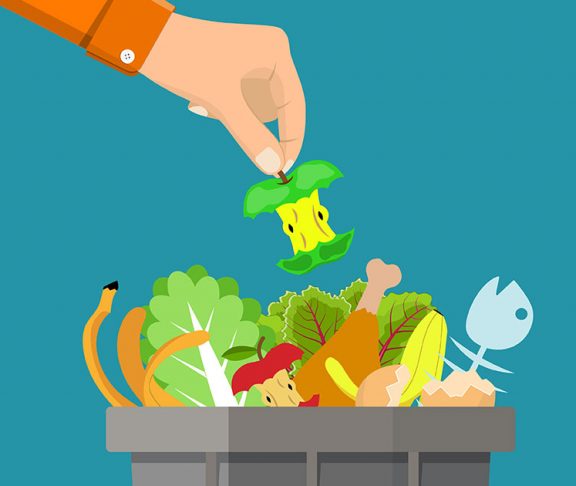In the drive to reduce greenhouse gas emissions, most people focus on the biggest source of them — the burning of fossil fuels, which is responsible for 75 per cent of global emissions.
But there is one significant source of emissions that many believe should be addressed, one that largely goes unnoticed despite the fact that we see it every day — food waste.
As food degrades over 20 years, it emits large amounts of methane, a greenhouse gas that is 80 times more potent in terms of warming than carbon dioxide. According to the United Nations Environment Program, it traps more heat in the atmosphere per molecule than carbon dioxide.
Furthermore, the more food that is thrown away, the more methane is produced.
Agriculture, the retail sector, and households all contribute to food waste.
Emissions from global food loss and waste is so large, that if its emissions were represented as a country, it would fall in third place behind China and the United States, according to the UN Environment program.

“A third of all food produced for human consumption is wasted, and it contributes eight to ten percent of climate-impacting greenhouse gases,” said Doug O’Brien, vice-president of programs at the Global FoodBanking Network, a non-profit organization that seeks community-driven solutions to hunger.
“That is four times the entire global aviation industry.” Furthermore, resources — such as water, land, and other inputs required to produce that food — are squandered.”
Food sustainability was discussed this week at COP28 in Dubai, with more than 130 countries signing the Emirates COP28 Leaders Declaration on Sustainable Agriculture, Resilient Food Systems, and Climate Action, with the goal of reducing food loss and waste as well as greenhouse gas emissions in the food chain.
The World Food Program discovered that approximately 1.17 billion tonnes of food are wasted globally each year.
This at a time when roughly 735 million people coped with hunger in 2022.
‘The whole system is broken’
In a 2019 report titled “The Avoidable Crisis of Food Waste,” food rescue charity organization Second Harvest discovered that more than half of all food in Canada — roughly 58% — is wasted each year.
(To be clear, food loss occurs during production, handling and storage, processing, and manufacturing. Food waste is thought to be generated by distribution, retail, and households.)
According to the UN, 931 million tonnes of food waste were generated globally in 2019, with 61% coming from households, 26% from the food service sector, and 13% from retail.
- What really happens to the organic waste you put in your compost bin
- WHAT IN THE WORLD? There is an app (or several) for that.
Second Harvest CEO Lori Nikkel disputes that figure.
“Food is wasted right across the supply chain. And in the past, people used to think it’s all about household [waste], which is true: there’s some household waste, but it’s a systems issue.







